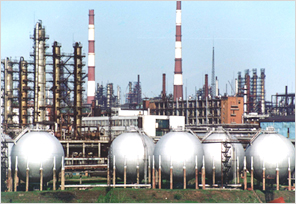Additives to reduce ash fouling problems have been evaluated in a research program focused on developing more cost-effective fireside antifoulants. Materials which showed potential for reducing deposit strength included magnesium oxide, calcium oxide, calcium carbonate, wollastonite. The reduction in sinter strength obtained with this technology represents significant improvement over that found with previously employed additives such as magnesium oxide and calcium carbonate. Field results obtained on a 440 MW utility boiler burning a high fouling Western lignite and on a 314 MW utility boiler burning an Eastern bituminous coal to control fouling.
Ash fouling of tubes in the superheater and reheater section of boilers remains a significant problem for coal-fired power plants. Fly ash accumulates on the tube surfaces where it forms hard, bonded deposits resulting in restricted gas flow through the passages or, in some instances, closing them entirely. This forces the unit to derate in order to continue operation or be shut down at frequent intervals for manual cleanout of deposits. For units firing high fouling coals, this deposit accumulation may occur so rapidly that even significant derating will not prevent unscheduled fouling outages.1
The degree to which a boiler will experience fouling is dependent on a number of variables including coal properties, boiler design and boiler operation. Research by prior investigators 2,3 has shown that coal properties are a major factor in fouling and determines to a large extent both the tendency and magnitude of ash deposition. Alkali metals (i.e., salts or compounds) have been identified as the chemical constituents which control this phenomenon.
Although several mechanisms have been proposed to explain the initiation and deposit growth steps encountered in fouling,4-6 it appears that the sintered strength of the deposition ultimately determines whether or not the accumulations can be removed from the tubes on-line. This sintering can occur at temperatures well below the fusion temperature of the ash and produces deposits which exceed the cleaning capabilities of conventional equipment, such as soot blowers. |

